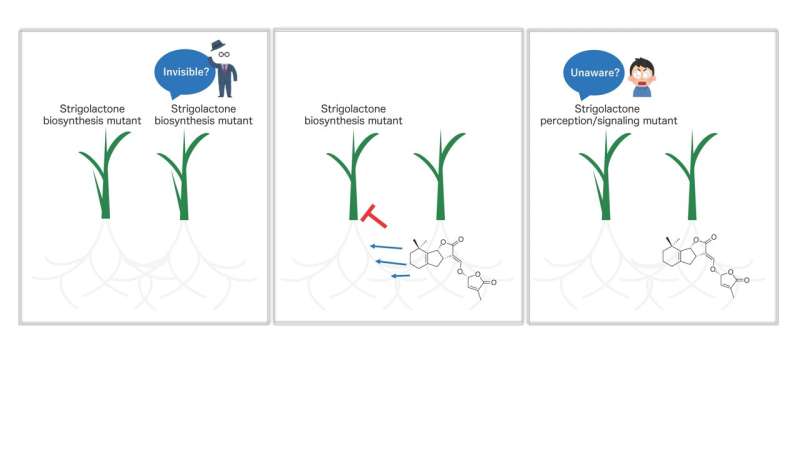Molecules that promote plant-to-plant communications below ground

Plants have evolved elaborate mechanisms for detecting neighboring plants, which typically involve the perception of "cues'" inadvertently produced by their neighbors. Strigolactones are hormonal signaling molecules that are also exuded into the rhizosphere by most flowering plant species to promote arbuscular mycorrhizal symbioses. Since flowering plants have an endogenous perception system for strigolactones, strigolactones are obvious candidates to act as a cue for a neighbor's presence, but have not yet been shown to act as such.
To test this hypothesis in rice plants, we quantified two major strigolactones of rice plants, orobanchol and 4-deoxyorobanchol, in root exudates using LC-MS/MS (MRM). We then examined the feedback regulation of strigolactone biosynthesis and the changes in shoot branching phenotypes in rice plants grown at different densities cultured hydroponically and in soil. We show that the presence of neighboring plants, or greater root volume, results in rapidly induced changes in strigolactone biosynthesis, sensitivity, and exudation and the subsequent longer-term changes in shoot architecture. These changes require intact strigolactone biosynthesis in neighboring plants and intact strigolactone signaling in focal plants.
Published in Current Biology, these results suggest that strigolactone biosynthesis and exudation in rice plants are driven by supra-organismal environmental strigolactone levels. Strigolactones thus act as a cue for the presence of a neighbor in rice plants, but also seem to act as a more general root density-sensing mechanism in flowering plants that integrates soil volume and neighbor density and allows plants to adapt to the limitations of the rhizosphere.
More information: Kaori Yoneyama et al, Supra-organismal regulation of strigolactone exudation and plant development in response to rhizospheric cues in rice, Current Biology (2022). DOI: 10.1016/j.cub.2022.06.047
Provided by Ehime University

















